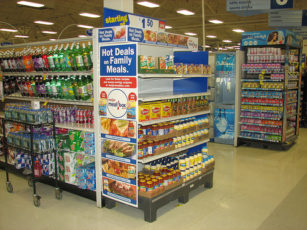Impulse buying can be a very dangerous compulsion. It involves spending money on unnecessary items immediately. There is NO prior planning beforehand, no long or hard thoughts put into the decision. The common theory is that consumers only purchase small items on impulse such as candy, magazines, or snacks.
However, recent worrying news is that impulse buying now extends to large ticket items such as an expensive getaway or vacation, a vehicle, or even a new house. The true danger is the aftermath of these purchases, and how the consumer will handle such a large payment that was probably put on a credit card or loan.
1. Create detailed grocery lists –
One of the biggest impulse buying pitfalls is at the grocery store. How many times have you run in there to grab 1 or 2 things and then BAM! Next thing you know its 45 minutes later and your cart is full of items you didn’t except to get.
Creating a detailed food list will help keep this nightmare from happening. If you have weekly menus for dinner already in place, you can grab the specific ingredients for those meals and not worry about impulse buys ruining your budget.
2. Don’t shop when angry or stressed –
People do all sorts of unhealthy things when they are upset, to try and make themselves happy again. Shopping just happens to be one of them. And it can get really expensive and out of control.
Get Started With a Free Debt Analysis
We make it easy on mobile or desktop. FREE with no obligations.
Find a healthier medium or hobby to help reduce stress and handle anxiety. Try yoga or meditation to relieve that pent-up anger and help save your pocketbook.
3. Use cash instead of credit cards –
Credit cards give individuals an easy way to make these “spur of the moment” impulse buys, but consumers need to stay away from them because of the high interest rates associated with most cards.
Try paying with cash instead. By limiting purchases to the cash that’s in your wallet, when it’s gone it’s all gone and the shopping trip is over. Your budget and future financial picture can thank us later.
4. Don’t fall for “endcaps” or checkout lane items –
In retail marketing, an endcap is a display for a product or multiple products that are placed at the very end of an aisle. Products placed on an endcap will sell at a much faster pace and they’re usually marked up at a higher price.
These endcaps and checkout lane small items are merchandise that stores want you to buy impulsively and most people do just that. But now you’re too smart for that!
5. If you can’t return it, don’t buy it –
If you truly have a problem with impulse buying, at the very least, only buy products from stores that have good return policies.
Sometimes if you give yourself a day or two to think “Do I really need this?” you might find yourself wanting to return several items that you bought.
6. Just because it’s on Sale doesn’t mean you need it –
Sales with huge markdowns can make impulse purchases very tempting. This is where the importance of knowing the difference between a “want” vs. a “need” can really be helpful and save you a ton of money.
Remember, if you see an item on sale, you will always save more money if you don’t buy it at all! Ask yourself, “Do I really NEED this or do I just WANT it because it’s on sale?” Be honest…
7. Don’t go shopping with Shopaholics –
If you have impulse-happy shopping friends, it can be way too easy to let them convince you that the 12 outfits you just tried on look awesome on you, and you should really get them all. A little flattery goes a long way!
If you want to shop socially, go with friends that have frugal spending habits. Also, bringing children or even spouses can be a sure way to fill your shopping cart with all sorts of impulse buys. Leave them at home if you can!
